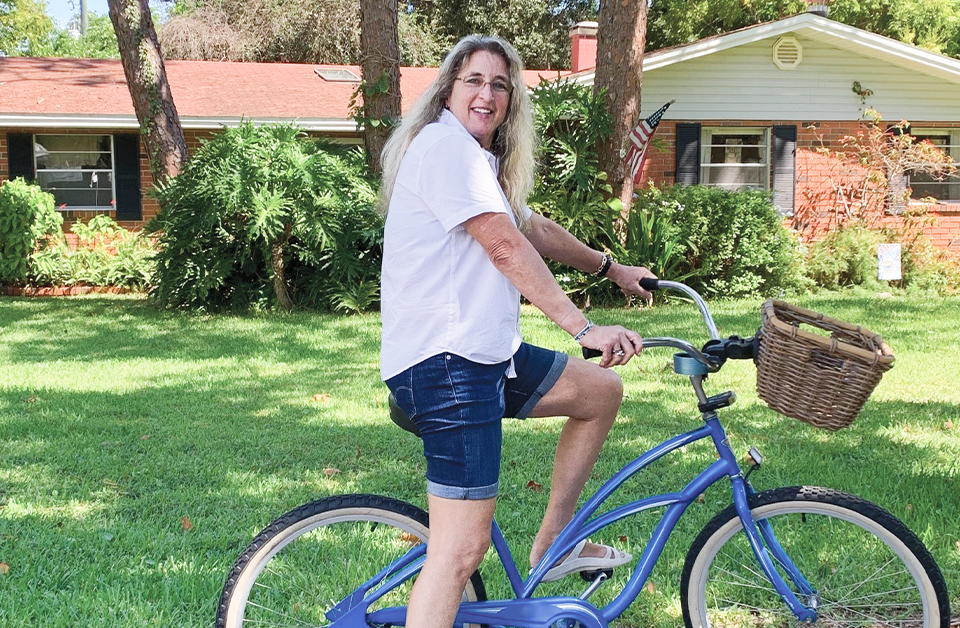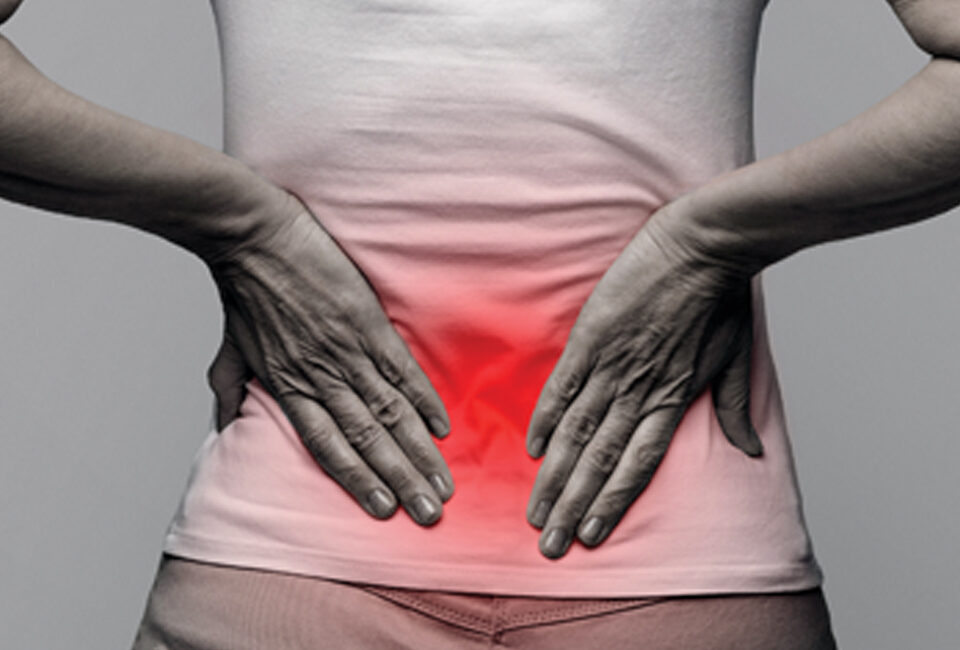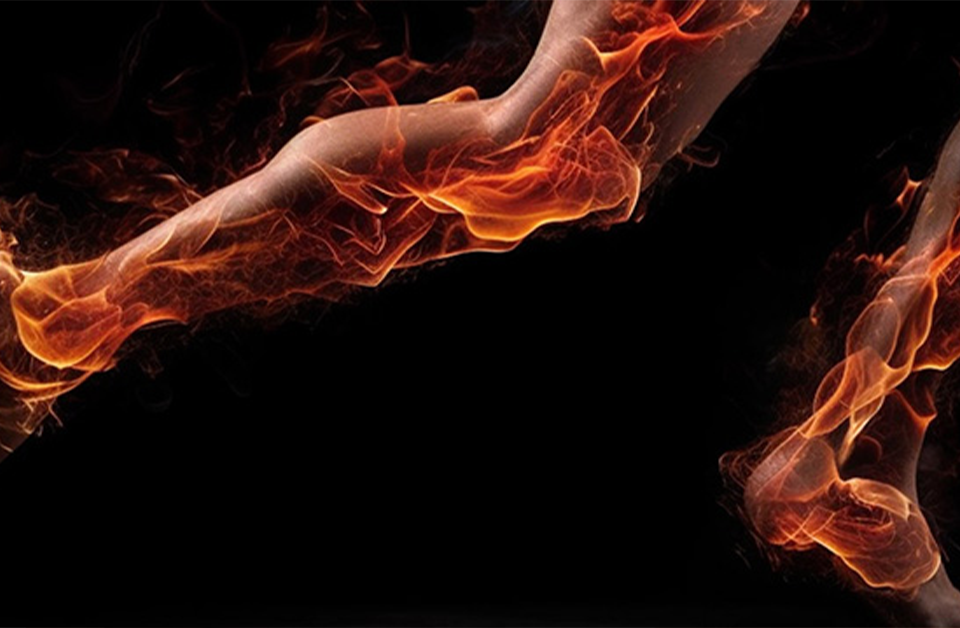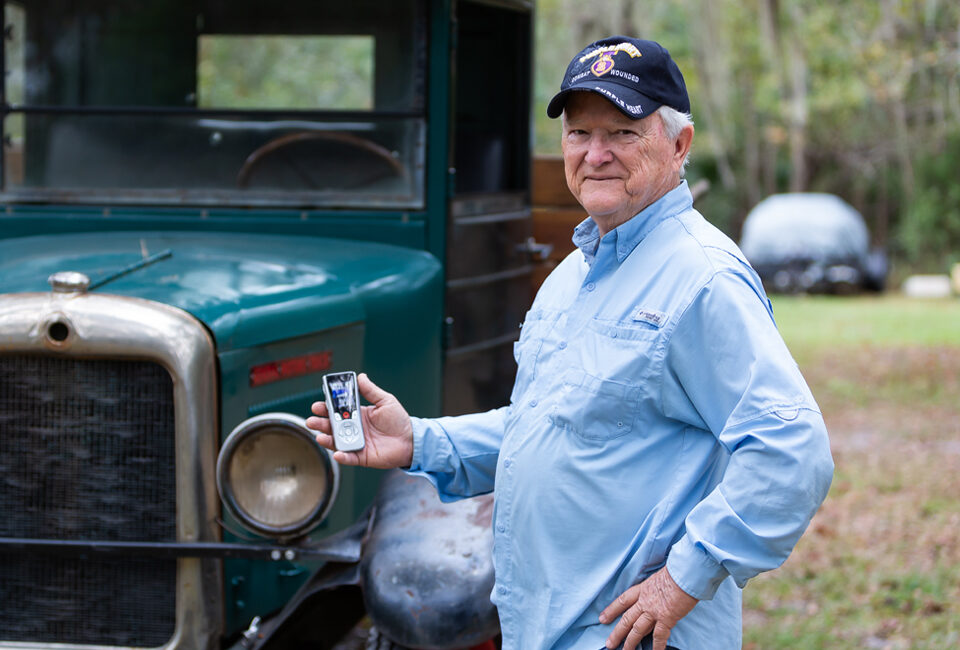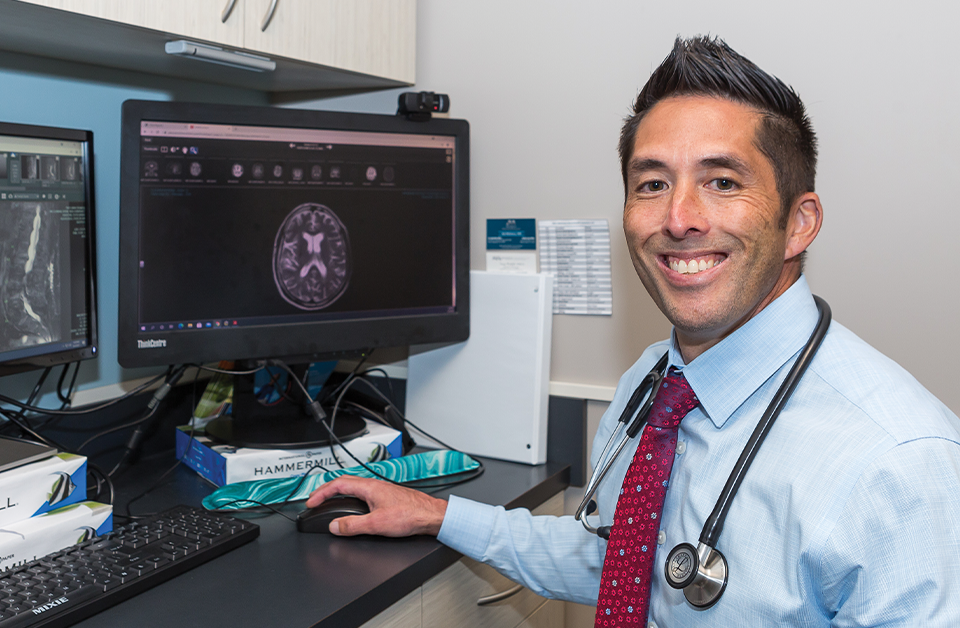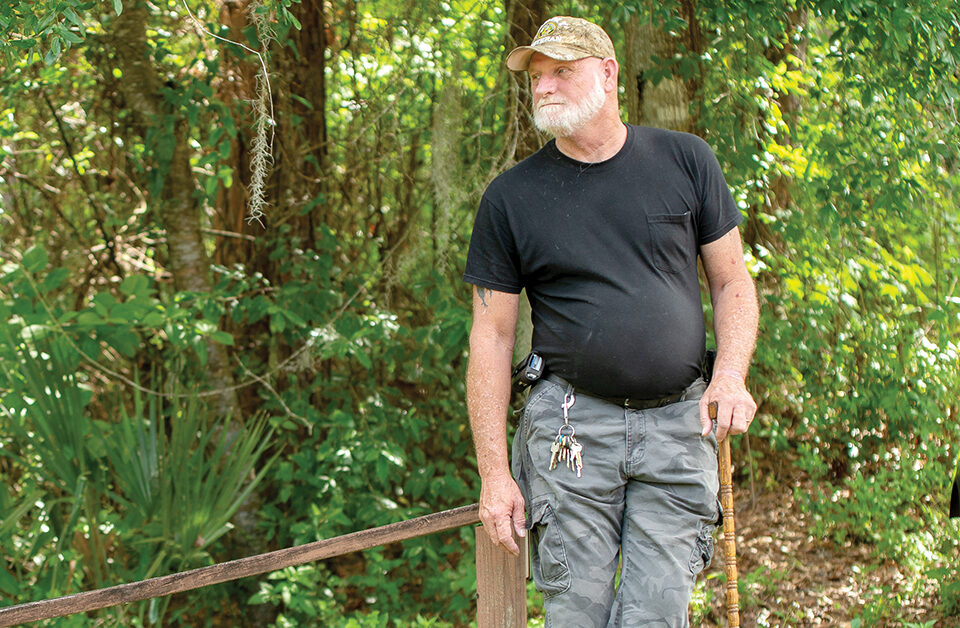

Jordan Pysz / ifoundmydoctor.com
Without shoulder pain holding him back, Gary has resumed fly fishing.
Gary Charles Rowland began his military career in the Air Force. However, shortly after his hitch was over, Gary realized he missed the service. So, he enlisted in the Army, serving 36 years and achieving the rank of chief warrant officer 4.
“That’s a technical rank,” enlightens Gary, 72. “It’s equivalent to a lieutenant colonel. I was promoted to lead fire operations and logistics operations.”
Gary chose the Army rather than return to the Air Force because he wanted to be outdoors doing field maneuvers. He was primarily a desk jockey in the Air Force.
“I didn’t like working in the office,” Gary states. “The Air Force didn’t have any jobs other than those that required sitting at a desk, so I went into the Army instead. I enjoyed being out in the field doing Army activities.”
After retiring from the military in 2005, Gary went to work for a Jacksonville yacht company run by a former fellow Army officer.
“He called me one day and asked if I was doing anything,” Gary recounts. “I said, No, I just retired back to St. Augustine. I eventually went to work for him and ran his supply operations for 14 years until 2019. Then I retired for good.”
Gary happily found more time for activities he finds enjoyable, including traveling with his wife, hanging out and — most importantly — fishing.
“I enjoy all fishing, but I really like fly fishing,” Gary elaborates. “There’s a pond near our house where I can practice, but we usually go up north to the mountains in North Georgia, North Carolina and South Carolina to fish.”
About a year into his retirement, Gary had to give up fly fishing. Intense shoulder pain interfered with the smooth motion of casting his line so it floats on the water’s surface.
“It was a really severe pain, a nine or 10 on a scale of one to 10,” Gary reports. “The pain was at different times achy and sharp, but it was sharp most of the time. It was so bad that it often woke me up in the middle of the night.”
Gary speculated the problem may be related to a neck issue for which he underwent surgery in 2020. Otherwise, he could not pinpoint an injury that triggered the issue.
“It just developed over time, kind of the nature of the beast with what I had been doing because I was always lifting stuff when I was in the Army. Now, I couldn’t lift anything because of the pain.”
Seeking help, Gary made an appointment with Kai McGreevy, MD, DABPN, RPVI, RPNI, RMSK, a board-certified neurologist, pain management specialist and founder of McGreevy NeuroHealth.
“I went straight to Dr. McGreevy, Gary says. “My wife goes to him, and she’s achieved good results with her condition. I didn’t trust anybody else.”
Initial Treatments


Dr. McGreevy uses the most advanced treatment modalities to restore his patients’ neurological deficits and ease their pain.
“Mr. Rowland came to me as a consultation for shoulder pain,” Dr. McGreevy reports. “He had been struggling with the pain for several years, and it was limiting his range of motion to a level that impaired his quality of life. The pain was gradually worsening, but he was uninterested in surgery to treat the issue.
“I examined his shoulders and arms, noting on ultrasound that he showed evidence of joint degeneration as well as bursitis and tendinosis. Most of these changes were related to wear and tear over time.”
Bursitis is the inflammation of the small, fluid-filled sacs, called bursae, that act as a cushion between tissues. The major bursae are in large joints, including the shoulder.
Tendinosis is the deterioration of a tendon, typically in response to overuse.
Initially, Dr. McGreevy prescribed medication, physical therapy and a home exercise program. When those treatments failed to provide the long-term relief Gary sought, Dr. McGreevy took another approach.
“We next tried various injections, including cortisone into the bursae and platelet rich plasma for the tendinosis,” Dr. McGreevy details. “But it still wasn’t enough to improve his quality of life and daily functioning. So, I recommended peripheral nerve stimulation.”
Seizing Pain Signals
Peripheral nerve stimulation involves the placement of a small electrode near the nerve targeted for treatment. In the case of chronic shoulder pain, that is the suprascapular nerve, which travels across the shoulder and back toward the scapula (shoulder blade). 

Using fluoroscopic guidance, the doctor places the electrode under the skin within a few millimeters of the nerve.
“When turned on, the electrode delivers pulses of high-frequency electrical stimulation that essentially seizes the pain signals in the nerve and prevents the signals from traveling toward the spinal cord and up to the brain,” Dr. McGreevy explains. “If there are no pain signals, there’s no pain sensation.”
Peripheral nerve stimulation does not require a battery to be implanted as with some other neuropathic stimulators. The technology is so sophisticated that the workings of electrical stimulation are inherent within the lead placed near the nerve.
“There is an external, wearable antenna assembly, which is very soft and easy to hide under the clothes,” Dr. McGreevy informs. “This antenna powers the stimulator beneath the skin. It powers the receiver, which is made of a very fine material and is located within the electrode itself.”
The antenna is located where the lead is tunneled, secured in the middle of the back and held in place by a removable strap
around the chest.
The stimulator uses different electric waveforms. It can be programmed to replace the pain with another, more pleasant sensation, called a paresthesia, or no sensation at all.
“The peripheral nerve stimulator we used for Mr. Rowland has both options,” Dr. McGreevy notes. “He can choose tonic stimulation, where the pain is replaced with a vibratory buzzing or soothing sensation. He also has a non-paresthesia option. The choice depends on the patient’s preference. Mr. Rowland uses both but prefers the non-paresthesia option.”
Dr. McGreevy adds that peripheral nerve stimulation can be used to ease shoulder pain in patients who wish to avoid surgery, such as Gary, and when pain persists following surgery.
“Some patients with chronic shoulder pain are not candidates for surgery. They may have medical conditions that preclude anesthesia or their physicians choose not to treat with surgery,” the neurologist contends. “Peripheral nerve stimulation is an excellent option for these patients.
“In other instances, patients undergo surgery but still have refractory pain that involves the suprascapular nerve. I have treated patients who’ve had surgery and those who haven’t with peripheral nerve stimulation and achieved very good success in
both cases.”
Dr. McGreevy adds that peripheral nerve stimulation for chronic shoulder pain is covered by Medicare and most insurance plans.
Positive Results
Gary says that when he was first fit with his peripheral nerve stimulator, his pain decreased by more than 80 percent. Since then, his pain has disappeared almost entirely.
“With the stimulator on, I have no pain whatsoever,” Gary exudes. “I can even shut it off for a long time and still not feel any pain. And if I do start to feel a little bit of pain, like a one or two out of 10, all I have to do is turn the stimulator back on.”
“With the stimulator on, I have no pain whatsoever.” – Gary
As he gets more comfortable with the stimulator, Gary is slowly returning to his activities.
“I’m fishing, working out at the fitness center and sleeping through the night again,” he reveals. “I haven’t tried golfing yet, but I’m going to try that shortly. I’ll let the stimulator warm up, and then I’ll go out there and hit some golf balls to see how it works.”
Peripheral nerve stimulation has been very effective for Gary. He’s very pleased with the treatment, as well as the physician who provided it.
“Dr. McGreevy is the best,” Gary raves. “He and his staff always treat me well. They’re always looking out for my welfare. Dr. McGreevy is very knowledgeable. He performs all the diagnostics before he does any treatment. He takes good care of my wife and he takes good care of me, too. I recommend Dr. McGreevy to everybody.”





